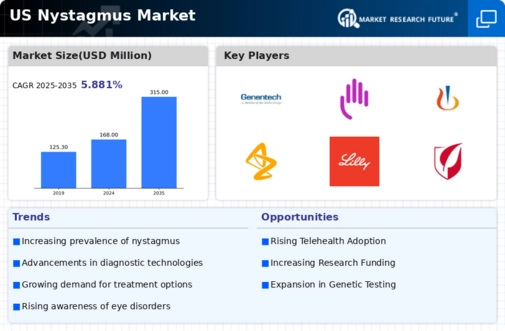The US Nystagmus Market has been witnessing considerable growth, driven by advancements in diagnostic techniques, treatment options, and increasing awareness among healthcare professionals and patients. Nystagmus, characterized by involuntary eye movements, can affect an individual’s quality of life significantly. As a result, the competitive landscape is becoming increasingly dynamic, with companies striving to develop innovative solutions to manage this condition.
A multitude of pharmaceutical and biotechnology firms are focusing on research and development, ensuring they meet the evolving needs of healthcare providers and patients alike. With a surge in clinical trials and investments in new therapies, the competition is intense, making it vital for stakeholders to keep abreast of industry trends and market shifts.
Merck and Co has positioned itself as a strong player in the US Nystagmus Market, leveraging its robust research capabilities and extensive distribution network. Known for its commitment to developing therapies that address unmet medical needs, Merck and Co has demonstrated significant strengths in terms of clinical efficacy and safety profile of its products.
The company’s investment in novel drug formulations and a pipeline focused on ocular conditions underscores its dedication to enhancing patient outcomes. Furthermore, Merck and Co benefits from its established relationships with healthcare providers and patient advocacy groups, allowing it to stay at the forefront of discussions around treatment standards and patient care initiatives in the realm of nystagmus.
Genentech has also solidified its presence within the US Nystagmus Market, focusing on innovation and a strong product portfolio that includes treatment options for related ocular conditions. Genentech excels in leveraging its strong research foundation and extensive experience in biotechnology, allowing it to bring effective solutions to market.
The company is recognized for its commitment to high-quality research and development, leading to the introduction of groundbreaking therapies that aim to improve patient quality of life. In recent years, Genentech has engaged in strategic partnerships and collaborations, enhancing its capabilities in the ophthalmic field. Mergers and acquisitions have also played a pivotal role in its market strategy, enabling Genentech to acquire specialized technologies and expertise that bolster its offerings in the Nystagmus Market, ultimately benefiting patients and providers in the US healthcare system.





















